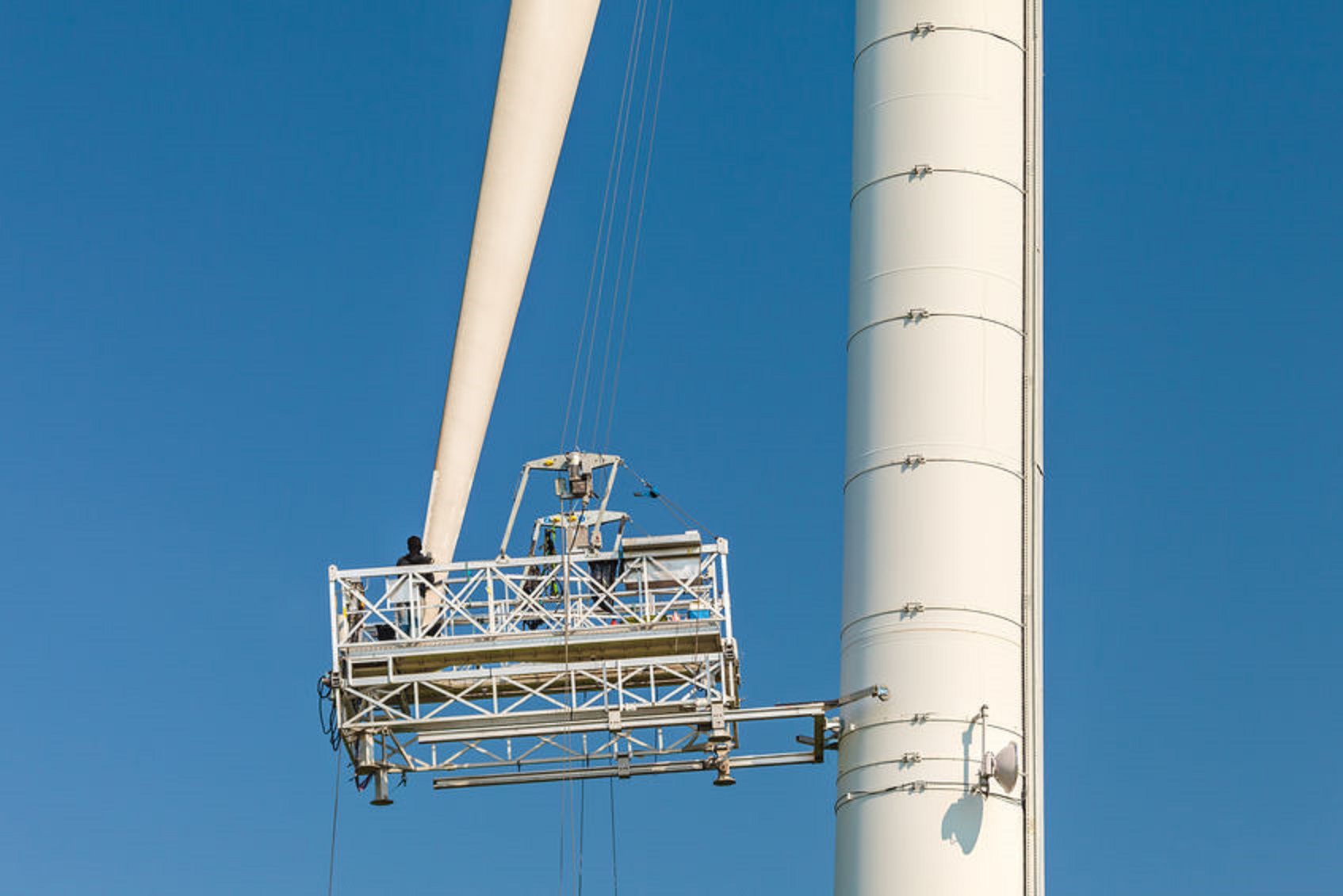
The most elegant element of the wind turbine is, at least for me, the blade.
Blades are currently reaching incredible lengths (onshore we are almost at 70 meters, offshore they can be even bigger) and, as I discussed in this post, can be made of several materials.
The cheap solution is fibreglass, more heavy, while the technological advanced, lighter (and more expensive) solution is carbon fibre. They are submitted to several loads of different origin – not only aerodynamics but also inertial, gravitational and other loads induced for instance by ice.
The main design drivers are aerodynamics, aeroelasticity (the correct damping of the blade) and fatigue behaviour.
But there are other technical requirements, and more technology hidden in the blade:
They must resist lightning. For this reason they often incorporate metallic elements to conduct the electricity to the tower and from there down to the ground. Lightning strikes are a relatively frequent – so frequent that there is a specific norm on the topic (IEC 61400-24). They usually hit the nacelle or the blades. The surprising part is that many lightning striking the turbines are upwards – that is, they go from the turbine to the sky. The metal conductor, usually in copper or steel, can be embedded in the surface of the blade or can be inside it.
They must resist ice. Some models include a mechanism (usually fan heaters or resistors) to warm them and avoid the accumulation of snow and ice, pernicious for stability, production and potentially even dangerous for people working in the area. There are also microwaves solution, that have a low energy consumption, and “defensive” (or preventive) solutions, such as hydrophobic foils. Basically, the ice will not stick to the blade.
They must resist erosion. 20 years of UV, sandstorms can seriously damage the surface of the blade, impacting production. Several solutions have been developed, such as special paints and epoxy or acrylic materials.
They must resist strong winds. During the life of the turbine, the blade can (and it probably will) be exposed to extreme winds.
They must be silent. A relevant percentage of the wind turbine noise is generated by the blade – usually around the tip. In several countries it’s compulsory to reduce the noise level under a certain dB threshold.
One of the most intriguing characteristics of the blades (at least for me) is the fact that they are “twisted”.
Conceptually, wind turbines blades works like the wings of a plane.
But on the wings of a plane, the speed is the same from the root to the tip, while on the blade increase from the root (where the blade is moving relatively slowly) to the tip (where speed is maximum).
Therefore, in order to have the correct angle of attack and keep constant the mechanical torque in each section of the blade, the angle of attack decrease from root to tip.
Leave a Reply